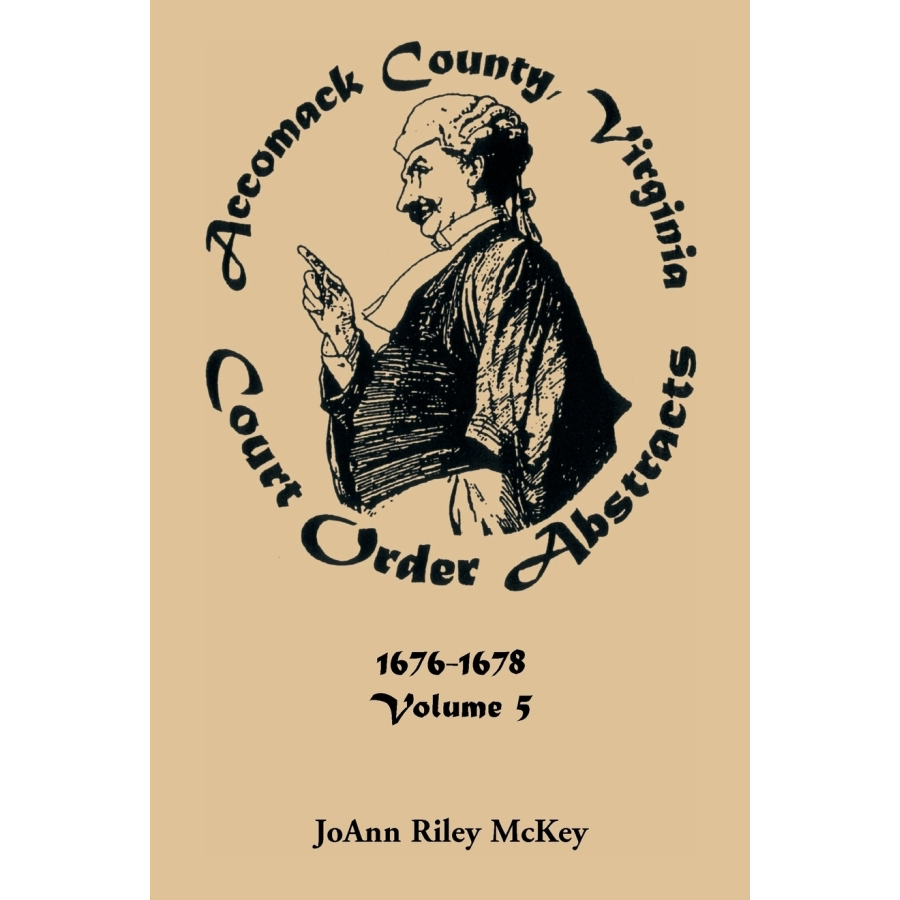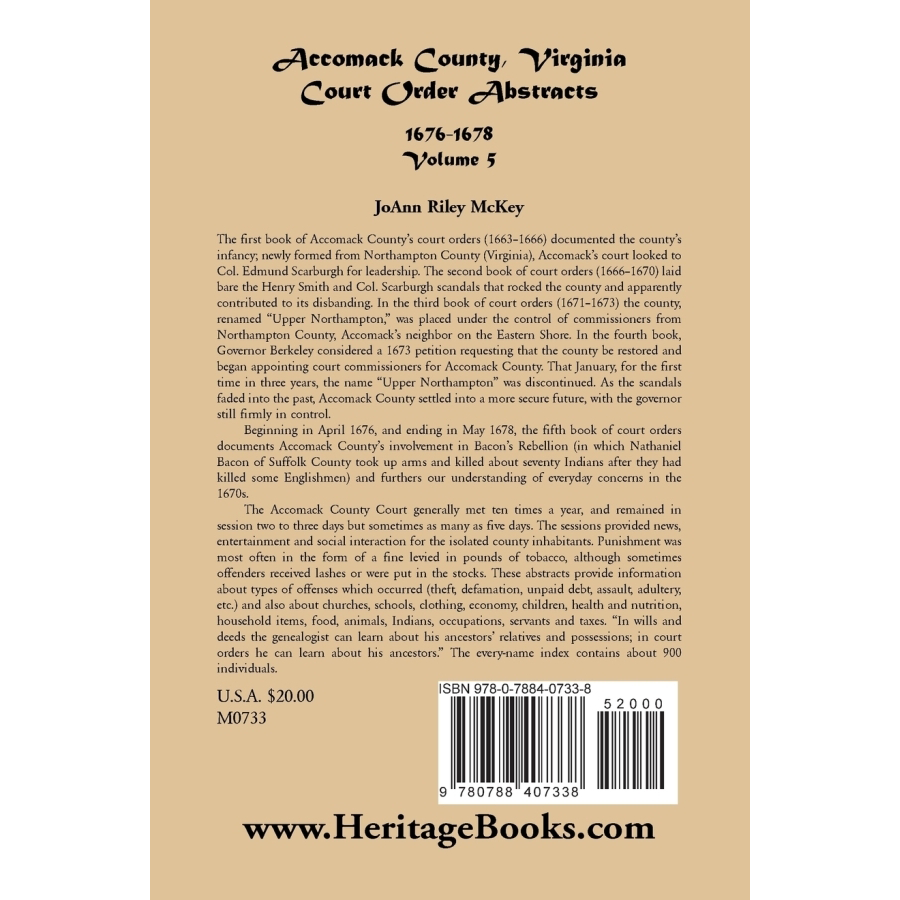Accomack County, Virginia Court Order Abstracts, Volume 5: 1676-1678
Couldn't load pickup availability
The first book of Accomack County's court orders (1663-1666) documented the county's infancy; newly formed from Northampton County (Virginia), Accomack's court looked to Col. Edmund Scarburgh for leadership. The second book of court orders (1666-1670) laid bare the Henry Smith and Col. Scarburgh scandals that rocked the county and apparently contributed to its disbanding. In the third book of court orders (1671-1673) the county, renamed "Upper Northampton," was placed under the control of commissioners from Northampton County, Accomack's neighbor on the Eastern Shore. In the fourth book, Governor Berkeley considered a 1673 petition requesting that the county be restored and began appointing court commissioners for Accomack County. That January, for the first time in three years, the name "Upper Northampton" was discontinued. As the scandals faded into the past, Accomack County settled into a more secure future, with the governor still firmly in control. Beginning in April 1676, and ending in May 1678, the fifth book of court orders documents Accomack County's involvement in Bacon's Rebellion (in which Nathaniel Bacon of Suffolk County took up arms and killed about seventy Indians after they had killed some Englishmen) and furthers our understanding of everyday concerns in the 1670s. The Accomack County Court generally met ten times a year, and remained in session two to three days but sometimes as many as five days. The sessions provided news, entertainment and social interaction for the isolated county inhabitants. Punishment was most often in the form of a fine levied in pounds of tobacco, although sometimes offenders received lashes or were put in the stocks. These abstracts provide information about types of offenses which occurred (theft, defamation, unpaid debt, assault, adultery, etc.) and also about churches, schools, clothing, economy, children, health and nutrition, household items, food, animals, Indians, occupations, servants and taxes. "In wills and deeds the genealogist can learn about his ancestors' relatives and possessions; in court orders he can learn about his ancestors." The every-name index contains about 900 individuals.
JoAnn Riley McKey
(1997), 2011, 5.5" x 8.5", paper, index, 160 pp.
ISBN: 9780788407338
101-M0733

